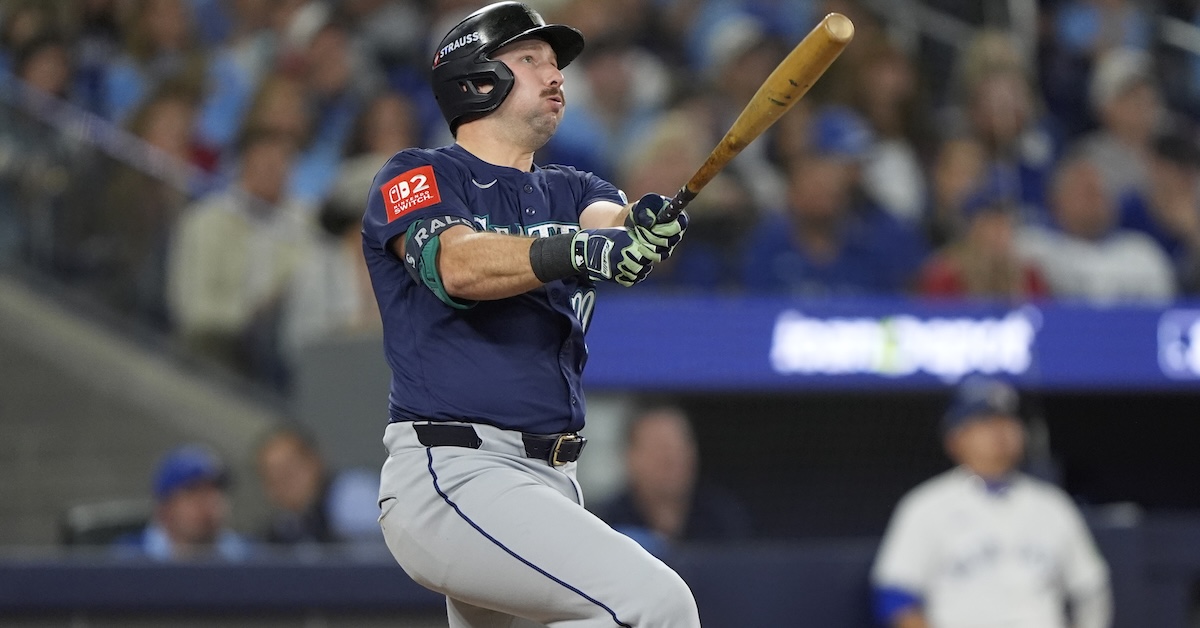InstaGraphs: Intentionally Walking Cal Raleigh

In Game 7 of the ALCS on Monday night, John Schneider’s Blue Jays pulled off a dramatic comeback in the bottom of the seventh inning that sent them to their first World Series in 32 years. The heroics came courtesy of George Springer, who hit a go-ahead three-run home run. But first, Schneider himself made a big decision in the top of the inning. With two outs and no one on base, Cal Raleigh stepped up. Two innings earlier, he had smashed a solo shot to give Seattle a 3-1 lead. Schneider wasn’t interested in facing him; he put up four fingers and called for the intentional walk.
Intentionally walking someone with the bases empty is a statement of strong fact: We absolutely cannot allow this person to hit a home run. To be fair, that’s definitely how Schneider felt in that moment; a home run would have been backbreaking for his team’s chances. Raleigh hit 60 of them in the regular season, so he’s obviously a pretty reasonable guy to fear when you’re specifically afraid of homers. But Josh Naylor, due up next, is a good hitter, too. And baserunners are bad in general. What did the math say about this move?
I threw projections for Raleigh, Naylor, and pitcher Kevin Gausman into my matchup model to find out. Splits are less of an issue here than normal because Raleigh is a switch-hitter, Naylor is a lefty, and Gausman is a righty with strong reverse splits in his career. In other words, it was a reasonable matchup for pretty much everybody. My model says that Raleigh would hit a home run off of Gausman just over 6% of the time. That’s a ton! League average for lefties facing righties is a mere 3.4%. It spit out similar projections for other outcomes – 4.4% chance of a double, 23% chance of a fly out, and so on – and by summing them all up and working out the win probability, I get a 20.5% chance of the Blue Jays winning the game with Raleigh coming to the plate against Gausman. Those homers are the big downside; the rest of Raleigh’s range of outcomes features a lot of strikeouts, and his projected OBP is around .290. This fits with Raleigh’s general game; he might get you, but if he doesn’t, you have a decent shot of striking him out. He’s a boom/bust player, in other words.
Raleigh didn’t get to bat, of course, so I also ran a second simulation of Naylor against Gausman. Naylor is much less of a power hitter than Raleigh (so is almost everyone), but he does project for a higher on-base percentage. Additionally, he got to bat with a runner on first base, which makes all of his hits more threatening. A single for Raleigh, with no one on base, has essentially no value. A single for Naylor puts a runner in scoring position, a much bigger deal. In math terms, a Raleigh single would have cost the Blue Jays around half a percentage point of win expectancy relative to “neutral.” A Naylor single (or walk) would be worth more like 1.5 percentage points. Likewise, all of Naylor’s positive outcomes would become better with a runner on base to juice them up, while his outs wouldn’t get any worse.
Stack all of his projected outcomes together (I project Naylor for a .311 OBP against Gausman, who is really good against lefties), and the model says that when Naylor faced Gausman with a runner on base, the Blue Jays projected to win only 20.2% of the time. That’s narrowly worse than the 20.5% chance they had against Raleigh, but honestly, it’s within the margin of error given how many approximations have to be used to populate my model. The official FanGraphs conclusion: Schneider probably shouldn’t have walked Raleigh there, but it was close enough that I would be uncomfortable saying it was a bad decision. It certainly didn’t help Toronto’s chances of winning, though. Credit goes to Gausman — who walked Naylor but then retired Jorge Polanco to escape the jam — and Springer that it all worked out.
Ben is a writer at FanGraphs. He can be found on Bluesky @benclemens.

If I recall correctly, Raleigh has also had a fair bit of success against Gausman. I suspect that doesn’t factor into the Instragraph calculations, and fair enough. But I’m sure it was on Schneider’s mind.